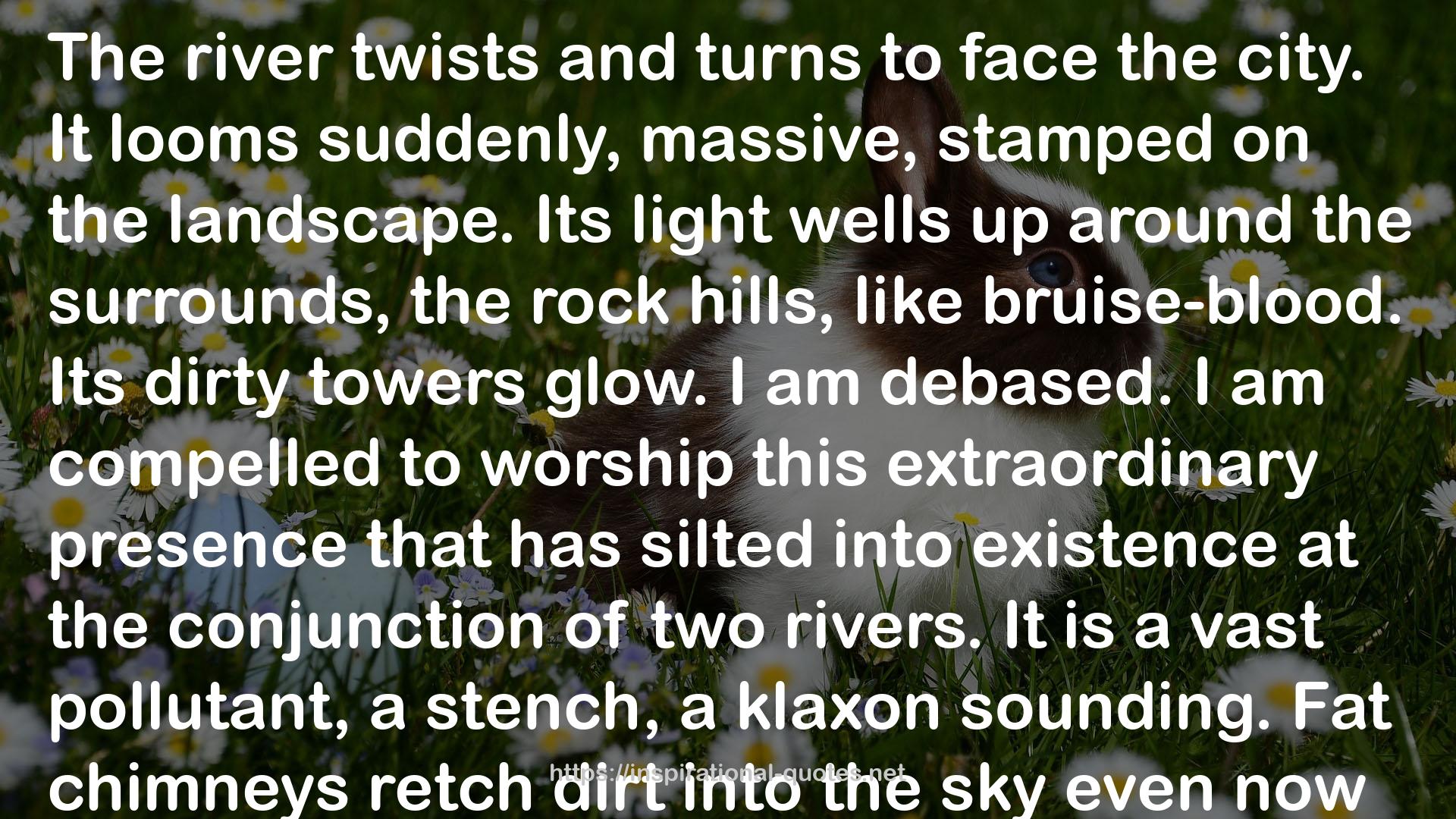" The river twists and turns to face the city. It looms suddenly, massive, stamped on the landscape. Its light wells up around the surrounds, the rock hills, like bruise-blood. Its dirty towers glow. I am debased. I am compelled to worship this extraordinary presence that has silted into existence at the conjunction of two rivers. It is a vast pollutant, a stench, a klaxon sounding. Fat chimneys retch dirt into the sky even now in the deep night. It is not the current which pulls us but the city itself, its weight sucks us in. Faint shouts, here and there the calls of beasts, the obscene clash and pounding from the factories as huge machines rut. Railways trace urban anatomy like protruding veins. Red brick and dark walls, squat churches like troglodytic things, ragged awnings flickering, cobbled mazes in the old town, culs-de-sac, sewers riddling the earth like secular sepulchres, a new landscape of wasteground, crushed stone, libraries fat with forgotten volumes, old hospitals, towerblocks, ships and metal claws that lift cargoes from the water. How could we not see this approaching? What trick of topography is this, that lets the sprawling monster hide behind corners to leap out at the traveller? It is too late to flee. "
― China Miéville , Perdido Street Station (New Crobuzon, #1)
